You might be surprised that the majority of your potential customers tend to abandon your ecommerce store due to poor customer experience. Your site is just one in a sea of billions of websites currently available on the Internet. Thus, to increase ecommerce conversion rates and help you stay ahead of your competitors, you need to deliver a superior user experience.
Wondering how to improve the ecommerce conversion rate? We’ve come up with a list of the 14 most useful conversion optimization tips that will help you double your conversion rates for your ecommerce website.
What is an online store conversion rate and ecommerce conversion optimization?
If you’re new to ecommerce, then terms like conversion and conversion optimization may be difficult to understand. We’ll explain the meaning of these terms and provide some examples. To start, let’s define conversion.
A conversion is when a user takes an intended action in reply to a CTA (call to action) on your website. An ecommerce сonversion rate is determined by the percentage of the total number of visitors who completed the desired action in a certain period of time.
Usually, it’s the percentage of users who bought something from your ecommerce store. Nevertheless, this metric is not the only method for assessing the online store conversion rate. Different activities may also be counted as a conversion depending on your business objectives.
Other examples of ecommerce conversions are saving a product to buy later, adding an item to a cart, creating an account, subscribing for membership, sharing products on social networks. Any actions your company considers useful.
On paper, it may seem rather simple, but it’s a little more challenging than just encouraging more users to act. There are many things that need to be taken into consideration to guarantee your conversion process is operating as it should.
Conversion rate optimization (CRO) is the process of increasing the percentage of users who take any desired action on a site. If you’re applying it for an ecommerce store, then it’s called the ecommerce conversion rate optimization.
Ecommerce conversion rate optimization should be regarded as an ongoing process of analyzing, upgrading, and testing. In short, CRO is the process of enhancing the user experience. Provide a user-friendly interface, intuitive menu, and seamless checkout so customers can purchase what they want in a few clicks. That’s ecommerce conversion rate optimization in a nutshell. The ultimate aim, of course, is to gain more sales.
How to calculate conversion rates for an ecommerce store
To calculate conversion rates for an ecommerce store you need to choose what counts as an ultimate goal (clicking to a certain page, adding an item to a shopping cart or purchasing the product on your site) in your analytics program.
In ecommerce, we typically refer to a purchase being made on your online store as a metric for conversion. So take the overall number of your sales and divide that number by the overall number of your visitors.
For instance, if your store is getting 20,000 visitors and 200 sales for a fixed period, so your ecommerce store’s conversion rate is 1%. Average ecommerce conversion rates range from 1%–2%. Regardless of your present conversion rate, there are many opportunities for improvement to boost your ecommerce revenue.
14 tactics to increase your ecommerce conversion rate
The best way to improve ecommerce conversion rate is by performing an efficient CRO campaign. This article presents 14 ecommerce conversion optimization tips to boost your sales.
Display high-quality images and videos
Images and videos are the things that help sell products online. One of the best strategies to increase ecommerce conversion rates is to use high-quality photos and videos of your product. Customers want to buy the products, which are visually attractive. The more appealing these product images look, the more chances you have for high conversions.

Don’t use small, poor-quality, and cropped photos. If you want to improve conversions, add to your website large, high-resolution, and detailed photos. Showcase the products from various angles and make them zoomable. Don’t forget to optimize images for your ecommerce store.
Simplify the checkout process
The average online shopping cart abandonment rate is 69.89%. 23% of customers state that a complicated checkout process is one of the key reasons why they abandon the shopping cart. Shopping cart abandonment causes ecommerce companies to lose $18 billion in annual sales revenue. Consider how much money you’re leaving on the table! Simplified checkout should be the top priority for your ecommerce conversion rate optimization.
First of all, don’t demand your customers to create an account and provide a guest checkout option, so they can purchase without registration. Secondly, embrace a one-page checkout to streamline the process. Customers usually don’t want to browse through more than a couple of pages. That’s why we recommend our customers to implement a one-page checkout on the website to reduce shopping cart abandonment and increase conversions.
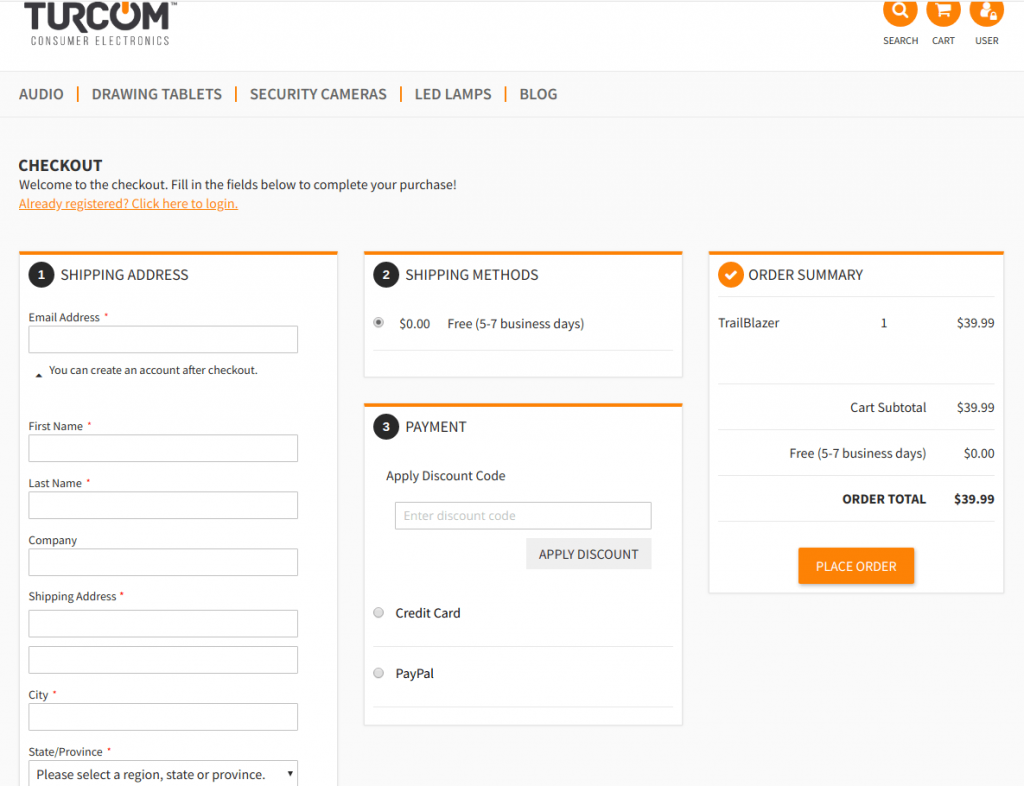
The more things a customer has to fill in to complete the purchase, the more likely they’ll leave the store and never come back. Include only the most necessary information such as shipping and payment details. Don’t forget about the email address that you can use not only to send the receipt but to upsell and cross-sell products based on the customer’s current order or location.
Offer free shipping
According to ComScore 47% of customers pointed out that they wouldn’t make a purchase if the free shipping wasn’t offered. Free shipping is a must-have feature in the current ecommerce market that can reduce cart abandonment. Thus, you should offer competitive pricing with free shipping to increase ecommerce conversions.
If free shipping isn’t something you would like to provide, think twice about the standard price you need to set to make shipping free. Believe us, it’s more beneficial.
Let’s say your product costs $200 but your shipping fee is $10. The value of the product significantly surpasses the shipping costs, however, for some reason, the majority of customers are unwilling to pay $10. Your customers would prefer to spend $215 with free shipping than pay a $200 for a product +$10 shipping charge.
It just how it works. If you still think that to charge for shipping is a better strategy, inform about shipping fees upfront and at least charge a flat fee instead of shopping per item.
Integrate shopping cart abandonment software
If you’re not integrating shopping cart abandonment software, you’re going to lose potential conversions. Some customers browse through your website, decide what they want and add the product to their cart, but for one reason or another (the price or the shipping fees, etc.) they don’t complete the purchase. They often just need a bit of motivation to finish what they started. It’s much easier to convince the customers to make a purchase than to find a new customer.
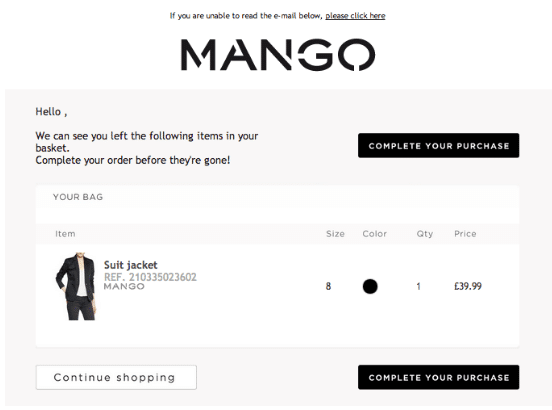
You can apply cart abandonment software or install the plugin to send cart abandonment emails with coupons and other offers to encourage customers to complete an order. Combine this tactic with checkout optimization and you would easily return lost clients. Some ecommerce platforms provide this software as part of the functionality or through a third-party extension.
Add CTA buttons
One of the ecommerce conversion optimization tips is to add several call-to-action (CTA) buttons to your ecommerce store. CTA buttons are the elements that direct customers and guide them where to go and what to do on your website.
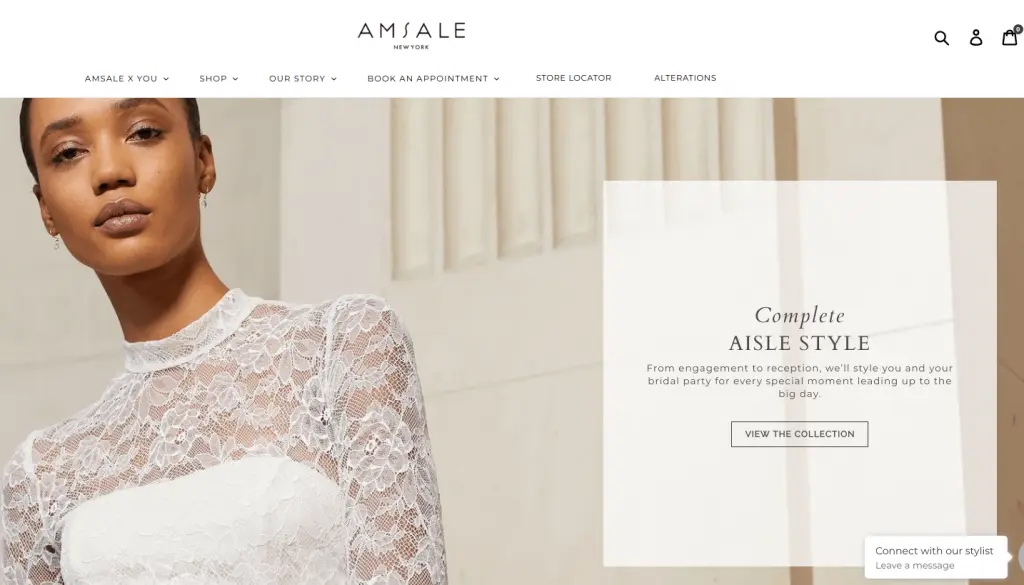
The most common call-to-action buttons are “Buy” or “Add to Cart”. Your top priority is to ensure your CTAs are clearly written and visible, so it’s easier for users to take action. They should be bold, big, and standing out from other content on your store, so people can actually see it. You also need to get the design and color right, so it encourages users to click through. We recommend putting a box around the CTAs, detaching them from other text on each page and using words like “right now” and “today” that express immediacy.
Include product reviews
Reviews are one of the most efficient ways to establish trust with new customers, resulting in higher conversions all round. Start collecting and demonstrating reviews on your ecommerce store. 88% of customers trust strangers’ online reviews as much as personal recommendations from friends or family members.

Encourage customers to write reviews on products and send photos they’ve bought to showcase those reviews on your store. More reviews mean more reliability. Even negative reviews can help you, as it proves that customer reviews are valid.
Provide multiple secure payment options
It’s crucial to provide multiple secure payment methods besides only a “pay by credit card” option. A recent survey reported that 50% of customers will cancel the purchase if their preferred payment solution isn’t offered.
Don’t miss out on potential conversions. You should accept all major credit cards (Visa, MasterCard, American Express, etc.) and add payment methods like Amazon Payments or PayPal. Don’t forget to offer alternative payment options such as Google Pay and Apple Pay. Check out our articles to find out how to capture more orders from mobile devices with Apple Pay and Google Pay.
Introduce personalized and related product recommendations
A recent study on personalized product recommendations shows that the conversion rate of visitors who clicked on product recommendations is five times higher than the conversion rate of visitors who didn’t click.
Include personalized and related product recommendations based on the preferences of the users who reached your online store. This shows your customers you really care.
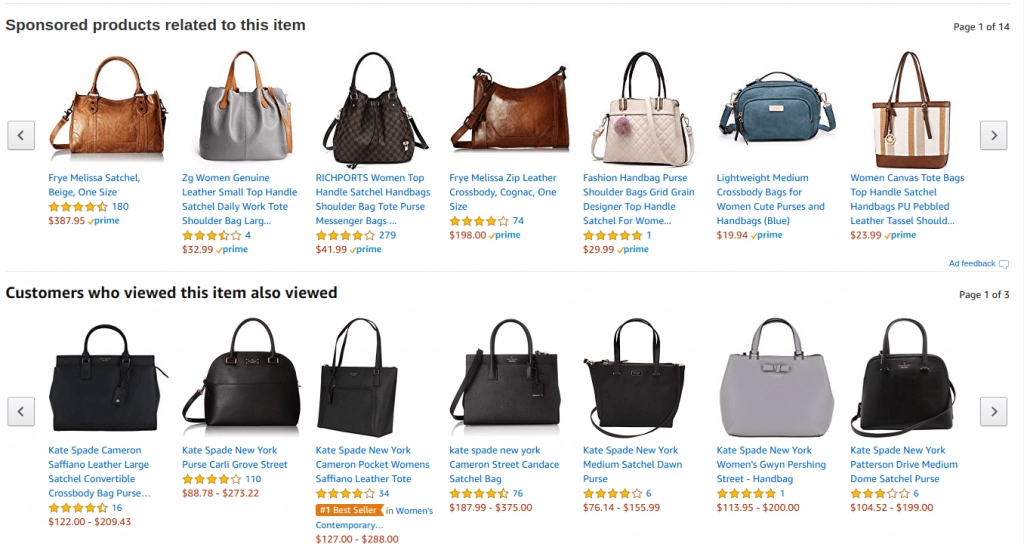
When it comes to ecommerce personalization and predictive modeling, Amazon is number one. By thoroughly analyzing the customer browsing and shopping behaviors, Amazon displays related items, a history of the products they’ve recently viewed, and recommendations for new purchases.
Use Live Chat
One of the tactics of conversion rate optimization is to install live chat on your ecommerce website. Live Chat is a software that provides outstanding customer service.

A recent study demonstrates that more than 60% of customers would like to return to the store that has a live chat option. With a live chat, you can reply to your customers’ sales requests immediately and direct them through the checkout process.
Make your navigation user-friendly
Navigation should have a smooth, hierarchical structure with categories that help customers to find what they’re searching for. We recommend applying a “hamburger” menu that includes three horizontal lines to provide user-friendly navigation.

Don’t forget about implementing effective product search and filtering. Filters allow customers to narrow down product lists and find the products they’re actually interested in, skipping over the pages and products they don’t need. Having these features makes your ecommerce store even more user-friendly, and that’s what ecommerce conversion rate optimization is all about.
Leverage discounts and offers
One of the other key tactics of conversion optimization for an ecommerce website is discounts and special offers. Some customers will purchase products they don’t need only because they’re on sale.
Use product placement and clear CTAs to leverage seasonal promotions for events like holidays, birthdays, and anniversaries. Don’t forget about cross-promotions that can attract new customers from other digital marketing channels.
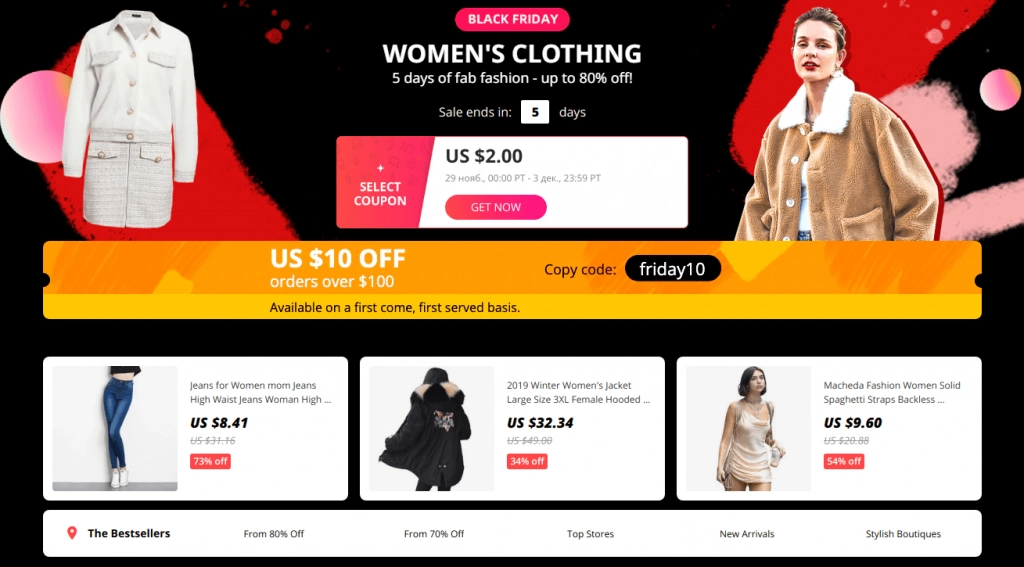
We also recommend organizing offers that encourage customers to purchase something on their store to win some other products, services or reward points. With these simple strategies, you’ll easily boost sales.
Demonstrate detailed product descriptions
The aim of the product description (sales copy) is to give customers enough information to persuade them that your product meets all their needs. To achieve the best results with ecommerce conversions, the product description should be informative, clear, detailed, persuasive, to the point, and error-free.
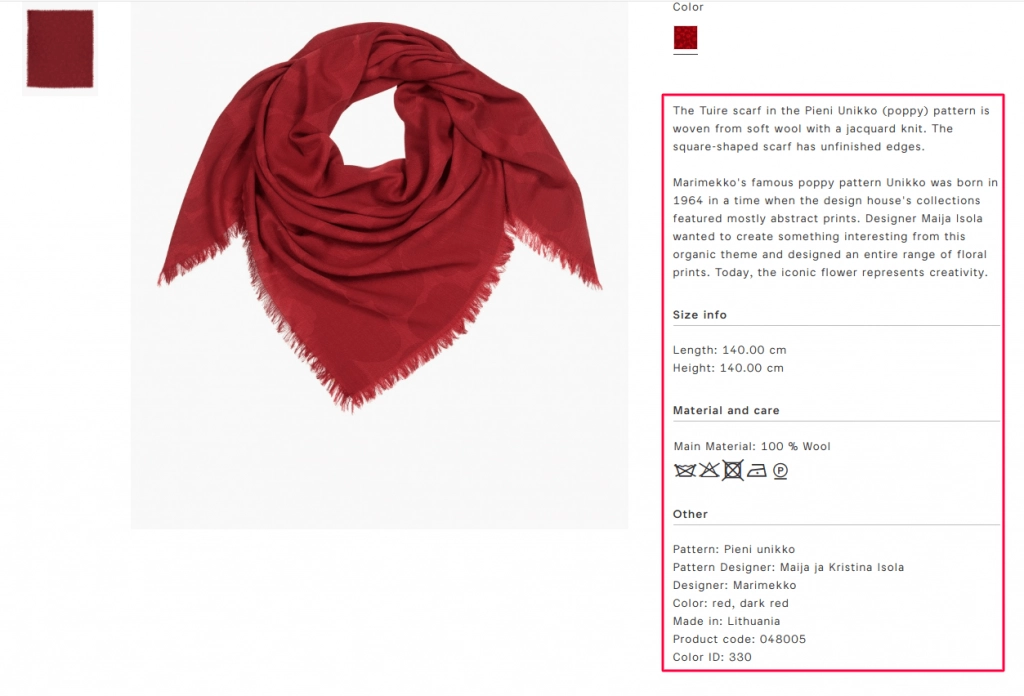
We recommend writing the description in the form of main points as they work the most effective. Add action verbs and power words to encourage further action and build an emotional connection. Last but not least, add keywords to rank higher as SEO optimized content can do miracles.
Retargeting
Retargeting is a vital part of any ecommerce conversion optimization aimed at encouraging customers to go back. This is crucial because most people are not likely to make a purchase on their very first visit to your site.
Once you determine visitors who have shown an interest in your products but left without completing a purchase, you can track them by applying personalized ads. In order to detect previous visitors on offsite channels, it is essential to store unique identifiers that comply with their user histories in cookies.
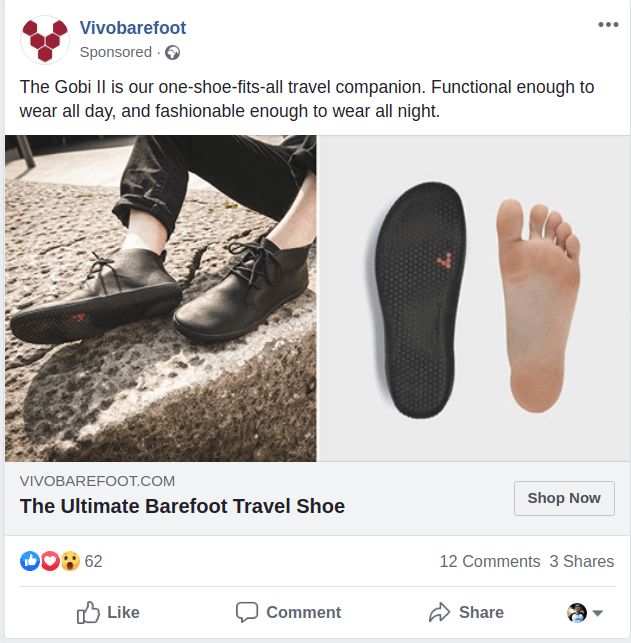
With retargeting, the customer sees a personalized ad on Google or Facebook. One of the examples of retargeting is a dynamic banner. The example below is a Dynamic Facebook Retargeting Banner, demonstrating products suggested to be relevant to the user based on browsing history or previous interaction with the main ecommerce website.
Include exit-intent popups
One way to improve an ecommerce conversion rate is to make the right offer just before customers abandon your site without buying anything. Exit-intent popups recognize when someone’s about to leave your site and put an offer in front of them.

With exit-intent popups including coupons, discounts, offers, or membership subscriptions, you have one last chance to persuade customers to take action.
Bottom Line
Whether your ecommerce business is brand new or has been around for a while, you should implement ecommerce conversion optimization to engage and convert users.
With an intuitive and user-friendly menu, high-quality product images, a seamless checkout process, exit-intent popups, live chat, a customized product search, secure payment options, and personalized product recommendations, you’ll have an ecommerce store that’s designed for getting maximum conversions.
As you see there are many things that you can do to increase your ecommerce conversion rate. We’re not suggesting you need to apply all of these strategies right away. However, with time, you should optimize your online store if you want to get as many sales as possible.


